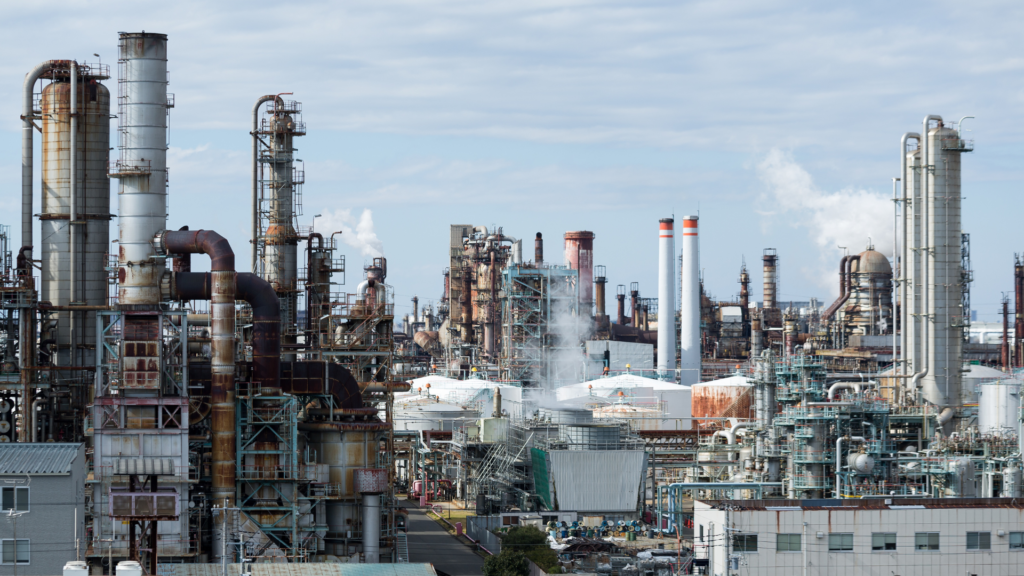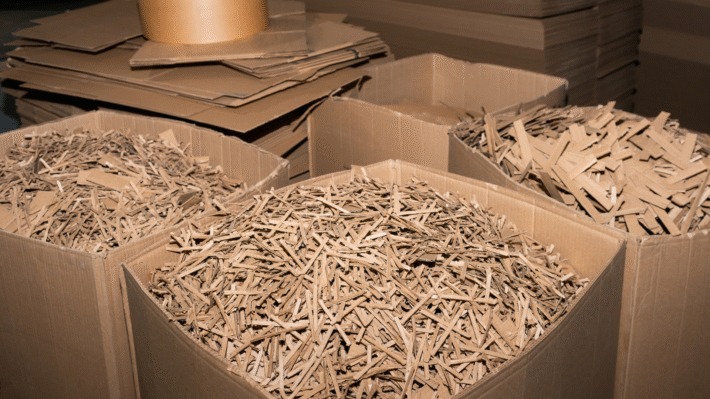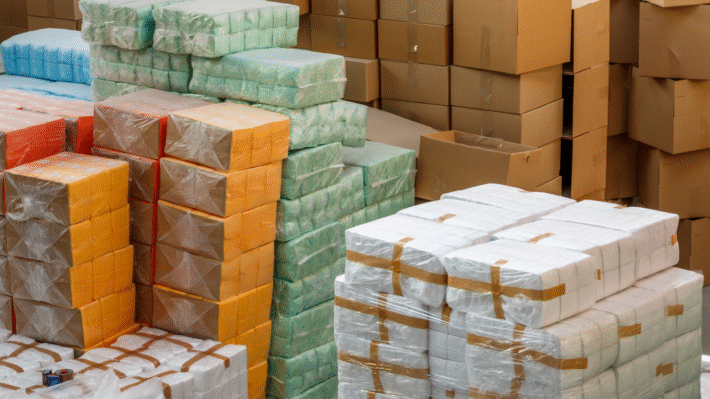Spark the Change: Creating Value from Oil Refinery Byproducts for a Circular Future

Welcome folks! Let’s explore the fascinating world of oil-reliant byproducts – bitumen, paraffin, and sulfur! Just imagine ditching the linear way of handling things and heading towards a circular economy in oil refining. It’s not fanciful thinking! We’ll be diving head-first into the creative potential of repurposing these traditionally seen ‘wastes’ into a wealth of new applications. Better yet, how about turning waste to resource? Sounds exciting, right?
Picture this – from 3D printing innovations using bitumen to advance batteries powered by sulfur! Or how about finding a new home for paraffin in drug delivery or food preservation? Get ready to dive into the sea of opportunities this adventure into circularity in the oil refinery byproducts supply chain promises to present, shining a light on waste reduction, resource optimization, and a whole load of tech innovations facilitated through budding research, digitalization, cross-sector collaborations, and many more. Get hitched as we gear towards achieving zero-waste refineries and creating a sustainable oil industry. Yes! It’s not just possible; it’s within our grasp!
Introduction to Circularity in Oil Refinery Byproducts
Let’s embark on a journey to understand the concept of circularity in the byproducts stemming from oil refining. This, my friends, is a tale of bitumen, paraffin, and sulfur – resources often overlooked, but with untapped potential to revolutionize the green economy.
Understanding the Concept of Circularity
Before we dive in, we should familiarize ourselves with some basics.
From Linear to Circular Models
Why circular? For years, the oil industry has operated in a “linear” manner. They dig up oil, transform it into products, and discard the byproducts, or waste. However, just like a fairy godmother turning a pumpkin into a carriage, science allows us to transform what’s considered ‘waste’ into valuable materials. That’s the appeal of the circular model. Industrial waste doesn’t have to be the end of the road; it can be the start of a new journey.
Importance of Waste Reduction
We all know that waste isn’t just, well, wasteful. It also poses significant environmental challenges. The beauty of a circular model is that it addresses these two birds with one stone – it minimizes waste and, in the process, reduces the strain on our precious planet. It’s a method that has economics and ecology walking hand in hand.
Resource Optimization in Oil Refining
Now, you might ask, how does resource optimization fit in the picture? I bet you’ve heard the old saying, “waste not, want not.” That’s exactly what we’re applying here.
Every drop of oil, every gram of bitumen, each molecule of paraffin, and even the stinky sulfur – if used optimally – can add immeasurable value. Instead of throwing these byproducts away, we can transform them into useful substances that complement a sustainable future. That’s smart utilization in tune with a greener world – the epitome of resource optimization in oil refining!
Valorization of Byproducts
Now that you’ve got the basics, let’s delve into turning these underappreciated byproducts into superstars in their own right.
Significance of Bitumen, Paraffin, and Sulfur
Bitumen, paraffin, and sulfur – these three musketeers of the oil industry often end up as waste. Yet, they hold amazing potential!
Imagine this. Bitumen, a sticky, black material mainly used for road construction, can even help in 3D printing and carbon capture. Paraffin, beyond the realm of candles, can be re-purpose into muscle-relaxing therapy wraps or rust-proofing coatings. And sulfur, a yellowish byproduct, can aid in agricultural soil remediation or even serve as a component in advanced batteries.
So, my friends let us roll up our sleeves to uncover new applications for these unsung heroes in the journey of circularity in the oil refining byproduct supply chain.
Innovative Applications for Bitumen
Kids, let’s call on our imagination caps. Think about play-doh. Remember that super-fun stuff we can mold into just anything? Now, imagine there’s a grown-up version of play-doh, something we call bitumen. It’s essentially a sticky, black, oil-based substance. But trust me, it’s way more useful than just being sticky and black. In fact, bitumen is the unsung hero of several high-tech applications that are transforming our world.
3D Printing and Carbon Capture
Imagine a 3D printer. Exciting, isn’t it? Now, picture that 3D printer using bitumen as its ‘ink’. Scientists are doing just that! They’re experimenting with bitumen for 3D printing to create new stuff, from construction materials to tools and beyond.
And if saving the planet sparks your super-hero senses, bitumen is also being used in carbon capture. It’s playing a crucial role in technological processes designed to stash away harmful CO2 from the atmosphere. Now, that’s what we call power-packed stuff!
Uses in Construction
Geopolymers and Recycled Asphalt
Yep, bitumen’s at work even when we’re zooming down the highway or strolling about a city sidewalk. In construction, we use it for creating geopolymers and recycled asphalt. Geopolymers are a type of man-made rock that, quite like the Incredible Hulk, are super-strong. They also stand up well against acid and heat. Bitumen, mixed with other waste products, forms the basis of these geopolymers.
And when we talk about recycled asphalt, we’re reducing waste by reusing old roadway material, and guess who’s the star of the show? Bitumen!
Bitumen in Enhanced Membranes
And we’re not done yet! Bitumen also has a significant role in making enhanced membranes. Think of these as supercharged raincoats that protect buildings from the elements. More than just a black, sticky mess, eh?
Environmental Benefits
Soil Stabilization
Bitumen’s superhero saga doesn’t end with 3D printers and construction. It extends to the environment too. One way bitumen helps is by working in soil stabilization. That means it can make weak soil stronger, helping support our roads and buildings. What can’t this material do?
Oil Spill Recovery Solutions
Remember those nasty stories of oil spills causing terrible damage to our beautiful oceans? Bitumen is stepping up to meet this challenge too! Innovators are looking at processes where they can use bitumen materials to soak up these oil spills. We’ve got another win against those pollution villains!
Bitumen, folks, is a whole lot more than just a black, sticky substance. It’s 3D printing magic, architectural armor, environmental hero, and a key player in the journey towards a sustainable future. Give it up for the humble, yet extraordinary bitumen!
Repurposing Paraffin for New Uses
When we think of paraffin, many of us might first think of candles. But what if I told you that this waxy byproduct of oil refining is lighting our way to a more sustainable future, and not just in traditional wax candles? There’s a revolution happening, and paraffin is at its heart, showing that we can make the most of every drop of oil. So, climb aboard, because this is going to be a journey you won’t want to miss.
Beyond Candles: New Applications
PCMs and Biodegradable Alternatives
Remember when I mentioned that paraffin was waxy? Well, it’s that quality that makes it perfect for something very cool: Phase Change Materials (PCMs). These wonder substances can store and release colossal amounts of energy, revolutionizing everything from home heating to food transportation. With PCMs, we can take the energy from the sun when it’s out and use it to keep our homes cozy when it isn’t.
But paraffin isn’t just good for PCMs. We’re also seeing tremendous potential in creating biodegradable alternatives to many everyday items. Just imagine — your takeaway coffee cup, your shopping bag, all made from waste oil refining products and completely biodegradable. Now isn’t that a future you’d like to be part of?
Industrial and Everyday Applications
Drug Delivery and Advanced Lubricants
But it doesn’t stop there folks, paraffin’s got some more tricks up its sleeve. It’s also shaking up the pharmaceutical industry. How you ask? By improving drug delivery! Yup, you heard that right. Certain medicines can be more effective if they’re released slowly in the body, and guess what’s perfect for that? Yup, you’ve got it, our underdog hero, paraffin.
Not just that, this versatile byproduct is also creating waves in the world of lubricants. Paraffin-based lubricants are seeing use everywhere from heavy machinery to your car’s engine, providing better lubrication and drastically reducing wear and tear.
Paraffin in Coatings and Food Preservation
And just when you thought paraffin had done enough, it’s also stepping up in the areas of coatings and food preservation. Paints and sealants that use paraffin are more resistant to water and wear, leading to longer life and less waste.
When it comes to food, paraffin wax helps in maintaining freshness and provides a protective layer that keeps the food safe from bacteria and other pathogens, dramatically reducing food spoilage.
As we move towards a more sustainable future, it’s clear that paraffin isn’t just a byproduct. It’s a powerhouse, capable of transforming a whole host of industries and applications. So the next time you light a candle, remember, there’s so much more that this humble wax can do, and it’s just getting started.
Transforming Sulfur into Valuable Resources
Folks, let’s dive into the world of sulfur, a byproduct of oil refining that’s often neglected. What if I told you it harbors immense potential? Yes, indeed, the seemingly worthless waste can be molded into valuable resources.
Innovations in Sulfur Concrete and Batteries
Did you know sulfur can give us robust concrete and super-efficient batteries? Let’s unveil these two magnificent innovations.
Sulfur, when heated, becomes a liquid that can mix with aggregate to produce ‘sulfur concrete.’ The beauty of this concrete is that it sets fast and offers high resistance to harsh environments, suitable for infrastructure in places like deserts and salt pans.
On the other side, we have sulfur batteries. They are the champs in the battery world, providing higher energy storage than conventional lithium-ion versions. Imagine your devices running for longer without needing a power boost. That’s the power of these advanced batteries!
Agricultural Applications
So, folks, how about we use sulfur to feed the world? Let’s explore how in the sections below.
Soil Remediation
Sulfur can be a great ally for farmers. Contaminated soil is a big challenge in agriculture today. Here comes sulfur to the rescue! Through a process called soil remediation, farmers can use sulfur to extract, immobilize, or destroy a wide range of pollutants in the soil, giving us healthier farmlands.
Enhanced Fertilizers
Moreover, sulfur plays a critical role in producing more enriched fertilizers by providing essential nutrients to the soil. Sulfur-based fertilizers can help improve crop yield and soil health, supporting the world’s food supply chain. It’s like cooking – just a pinch of sulfur spice can make our crops healthier and tastier.
Water Treatment and Material Advancements
Finally, let me tell you about sulfur’s contributions to water treatment. Sulfur can be used to create advanced materials that help remove contaminants from water, making it safe to drink.
This incredible transformation of sulfur, from being a waste product to becoming a valuable resource, underlines the potential residing in our oil refineries. Who knew that something we once saw as waste could help build roads, power our gadgets, and keep us healthy? It’s proof that every bit in our world, even what seems most worthless, can piggyback us to a more sustainable future.
Mark my words, folks, the journey towards creating circularity in oil refinery byproducts is just getting started! Stay tuned to uncover more such exciting transformations in our next discussion. Until then, keep exploring and stay wonderstruck!
Implementing Circularity in Supply Chains
Say goodbye to the days when oil refinery processes were just about producing oil. Let’s don’t just pull from our beautiful Earth and forget about the waste and byproducts we create during oil refining. In this age, a game-changing concept is catching fire: Circularity in Supply Chains! It’s all about ‘giving’ as much as we ‘take’.
Industrial Symbiosis and Cross-Sector Collaboration
Now, what do you reckon makes ‘industrial symbiosis’ so rad you ask? Well, my friend, it’s a situation where waste or byproduct of one industry becomes the treasure of another – ain’t that cool? Think of it this way – what if the wrapper from your favorite candy bar, instead of ending up in the trash, was used to create a flower pot? Imagine the waste of one process triggering the birth of a new product. This is the transformative power of industrial symbiosis!
But none of this happens in isolation. No. Cross-sector collaboration is the beating heart at the center of it all. Different industries finding common ground, sharing and integrating their processes, valuable resources, and byproducts. This ain’t just about being eco-friendly, no sir, it’s about making smart use of resources and boosting business at the same time!
Digitalization for Optimization
AI and Blockchain Applications
Digital cowboys and cowgirls, it’s your time to shine! We’ve got Artificial Intelligence (AI) and blockchain technology on our side to create this circular supply chain. Now, if your eyebrows are touching the ceiling trying to figure out how AI and blockchain enter this picture, let me explain.
AI can be super useful in predicting and managing supply and demand, identifying patterns, and optimizing resource usage. The tech twin – blockchain – keeps things transparent. Think of it as a digital ledger that makes the journey of every piece of waste from your factory to its new life trackable and transparent.
Policy Incentives and Economic Viability
No matter how appealing or exciting all this new technology and collaboration may be, it won’t get off the ground without the right policies. Governments, step up your game and offer incentives to businesses leading the way in this field!
However, it ain’t all about policy handouts. The circular supply chain should also make economic sense. Yes, it’s great to have a positive impact on our environment, but at the end of the day, the bacon’s gotta get brought home. With the right technological tools, effective collaborations, and supportive policies, a circular supply chain can become not just an environmental achievement, but a lucrative business model as well!
So, folks, it’s time to implement circularity in our supply chains and turn our waste into wealth. We’ve got the technologies, the platforms for collaboration, and hopefully soon, the right policy incentives. Let’s say goodbye to our throwaway culture and embrace the power of circularity.
Overcoming Challenges and Looking to the Future
The path to circularity in oil refinery byproducts is like climbing a mountain. The view from the top might be breathtaking, but getting there is full of uphill struggles. Yet, that’s where the real adventure lies. Let’s tackle the windy paths one step at a time, shall we?
Technological and Economic Barriers
The world of technology never stops spinning. It’s an ever-changing player that keeps setting the rules of the game. But when it comes to using bitumen, paraffin, and sulfur, technology sometimes feels like a bumpy ride.
For starters, not all technologies fit the ticket. Sure, we have amazing applications like 3D printing, but they’re not always cost-effective. Installing top-notch systems can feel like digging a hole in one’s pocket. Many companies back off, fearing the bite of high costs.
The challenge here is finding a sweet spot – technologies that are advanced yet affordable. This might look like a tough nut to crack, but hey, stronger the nut, more delicious the fruit, right?
Environmental and Social Considerations
Now let’s paint another picture. Assume we’ve nailed the technology game. Does it mean we’re all set? Nope. We need to worry about our dear Mother Earth too.
Each technology leaves its signature on the environment. We need to ensure that our tech-solutions don’t harm nature. In fact, they should contribute to improving it. That’s where the concept of “green” or “environmentally-friendly” technologies comes into play.
It’s also important to consider the social impacts. Transparent work conditions, fair wages, and ensuring local communities benefit from the oil industry is essential. After all, a happy society is the backbone of a strong economy.
The Role of Research and Development
Now, who’s going to solve these puzzles? Yes, you’ve guessed right. Cue in, our superheroes – the researchers and innovators!
Research and development (R&D) is the brain that fuels progress. It’s through constant R&D that we can overcome technological barriers, create environmentally-friendly solutions, and uplift social conditions. But remember, Rome wasn’t built in a day, and neither can we expect instant miracles from R&D.
Yet, with perseverance and the right policies, we can turn hurdles into stepping stones. Because that’s the true spirit of resilience. As they say, when the going gets tough, the tough get going!
So yes, the journey isn’t going to be easy. But with a strong focus on overcoming technological hurdles, environmental and social considerations, and a steady pace of research and development, we will get there. After all, the future depends on what we do today.
Stay tuned for the next part where we’ll discuss the economic and environmental benefits of creating a circular supply chain in the oil industry. Trust me, you wouldn’t want to miss that one!
Economic and Environmental Benefits
As we dive headfirst into a brave new age of resource optimization and waste reduction, the perks are undeniably irresistible. Not only does this revolutionary shift to circularity tickle our fancy for environmental responsibility, but it’s also a game-changer for the economy! Let’s dive into the two major benefactors – the economy and the environment.
New Revenue Streams and Job Creation
Cracking the shell of bitumen, paraffin, and sulfur waste throws open a treasure chest of opportunities. A treasure chest that is full to the brim with potential revenue streams and, you guessed it, jobs!
Consider this: each time a heap of paraffin waste gets a second shot at life as innovative PCMs (Phase Change Materials) or biodegradable alternatives, we curate a new market niche. These novel applications create an entirely new demand, driving production and birthing job opportunities.
Every bit of recycled asphalt or batch of geopolymers that ousts old, environmentally-unfriendly practices is an invitation to cash in. And factoring in the demand for skilled labor to ride this wave of ingenuity, it’s clear that we’re looking at a job creation powerhouse!
Reduced Emissions and Resource Protection
On the flip side, we have Mother Earth applauding our strides in creating a sustainable oil industry. How, you ask? The magic word here is ‘circularity.’ By taking the ‘use and throw’ off the table, we’re cutting back severe emissions associated with waste management practices. We must tip our hat to the transformation of sulfur waste into sulfur concrete and advanced batteries, which traditionally tap into a significant share of greenhouse emissions.
And we’re not just stopping at emissions! This shift to circularity in oil refineries takes us one step closer to safeguarding our precious resources. Remodelling waste into valuable secondary resources, like oil spill recovery solutions from bitumen waste, essentially means we’re reducing our extraction rates. In simple terms, instead of continually draining Mother Earth’s resources to feed growing demands, we’re recycling our waste to make new products!
So, as we journey down this road of circularity in oil refinery byproducts supply chain, let’s remember that the benefits are twofold. While this leap of innovation is sure to line our pockets and fuel job growth, it also has Mother Earth’s seal of approval! Nothing beats a win-win, right?
The Pathway to Zero-Waste Refineries
When we start talking about the refinery business, images of black smokestacks puffing out clouds into the sky might pop up in your mind. Well, let me tell you a little secret: That’s the old school image! Welcome to the era of zero-waste refineries, my friends!
Achieving Sustainable Oil Industry Goals
Now, the big question is, how are we moving towards sustainable oil industry goals? Course, it ain’t easy, but here’s the deal. Imagine turning every single smidge of waste from oil refinement into something valuable. Something you can make a buck on while doing Mother Nature a solid!
We’re taking what was once deemed “waste” and giving it a new lease of life. We’ve got everyday paraffin turning into advanced lubricants, and bitumen being used for 3D printing. Sulfur’s upstaging, too, shaping up into advanced batteries and acting as soil remediation in agriculture. Sound like magic? Well, it’s all based on out-of-the-box thinking, cutting-edge research, and folks like you!
Long-term Transformations and Future Prospects
“But, what does the future of this amazing industry look like?” you might ask. While our crystal ball is a bit cloudy, we do know one thing – it’s looking brighter with each passing day.
Long-term transformations are brewing as we inch closer towards achieving the dream of zero-waste refineries. There, your key players are going to be technological advancements and constant innovation. Imagine a future where all waste is just a building block for something new and better. How cool is that?
However, while we’ve made mighty strides, some obstacles must be overcome. Darn things like regulatory barriers and economic considerations are slowing us down a bit. But don’t fret, my friends, we’ve handled bigger problems before!
In this long journey, we’re not alone. Governments, industry partnerships, cross-sector collaborations, all of this will play their part and keep fueling our journey. Our path may be winding, but the destination is clear. Hang on tight, folks. We’re heading towards a wild and exciting future!



